Clancy Tucker's Blog, page 183
June 30, 2017
1 July 2017 - STORM PHOTOGRAPHY
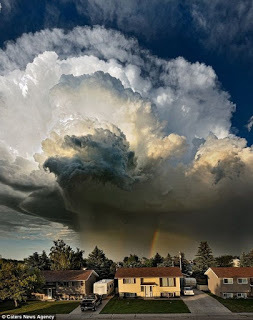
STORM PHOTOGRAPHY
G'day folks,
Welcome to some exceptional pictures taken by photographers during storms.

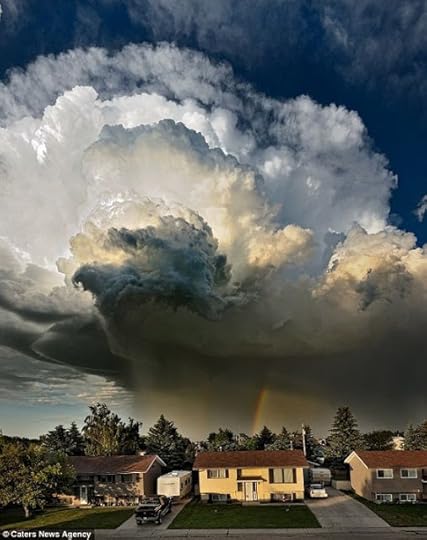

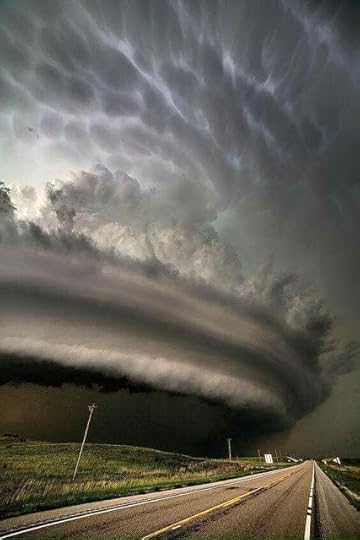
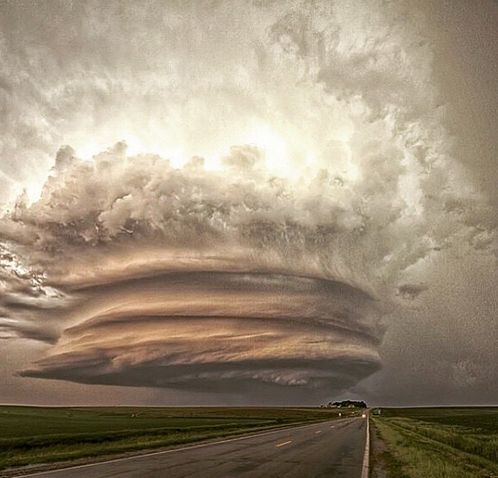

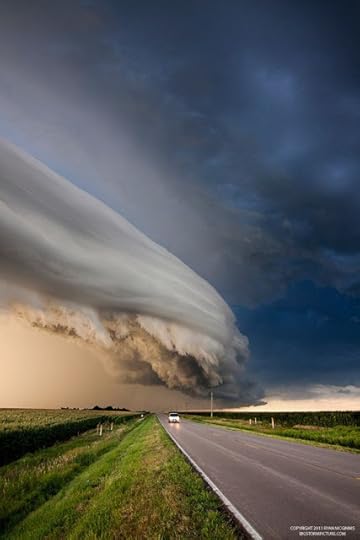


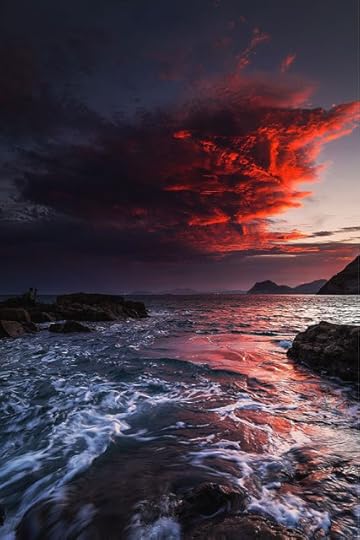
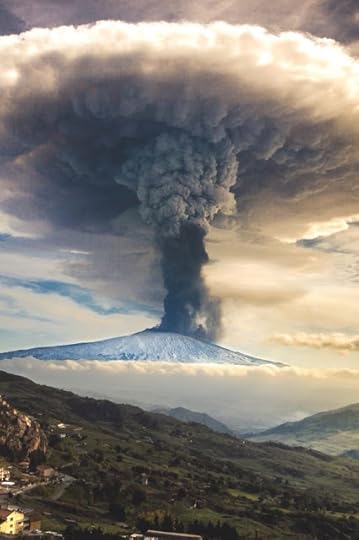
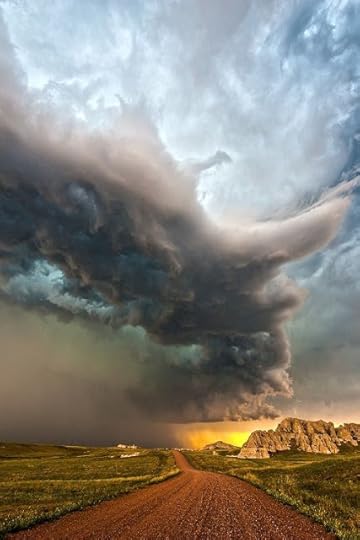


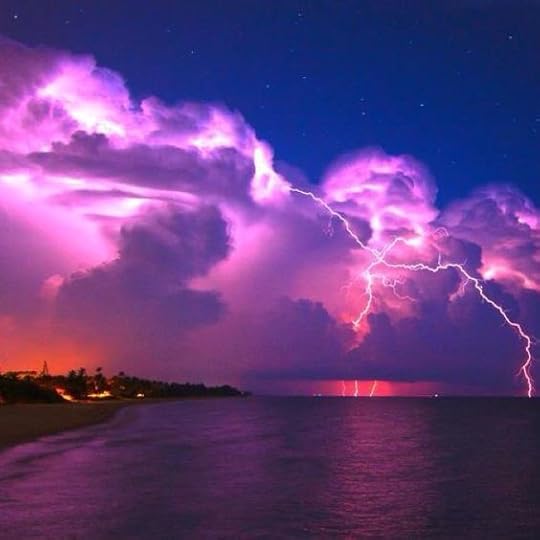

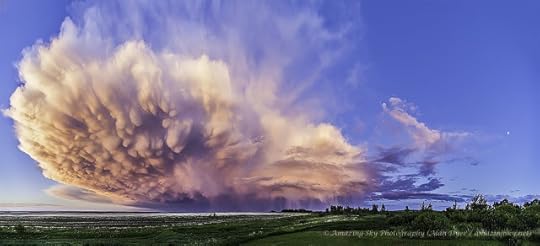
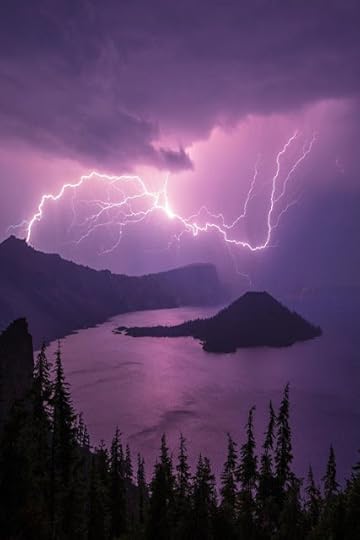

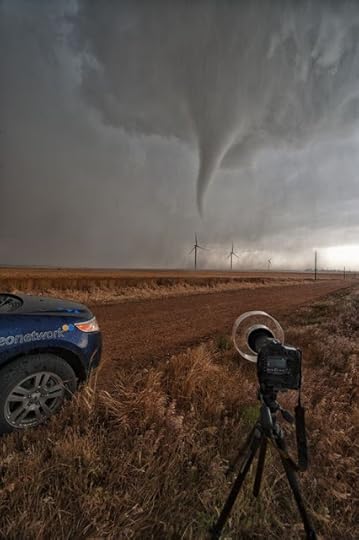
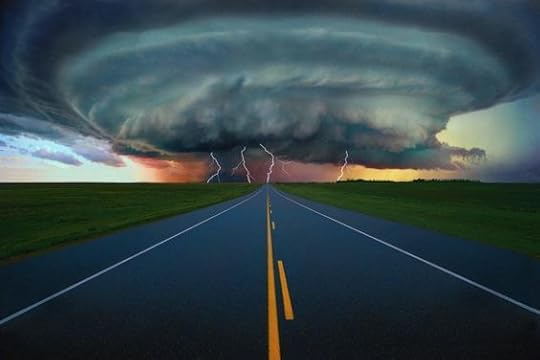

Clancy's comment: Amazing nature, eh? Stunning photographs.
I'm ...

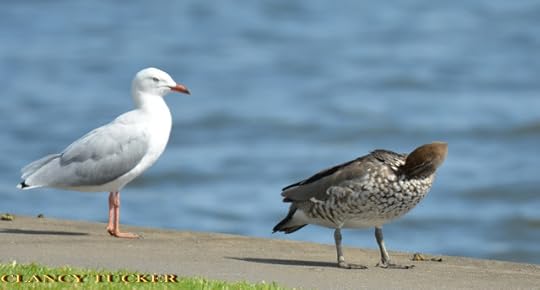
Published on June 30, 2017 14:58
June 29, 2017
30 June 2017 - WEIRD THINGS WASHED ASHORE
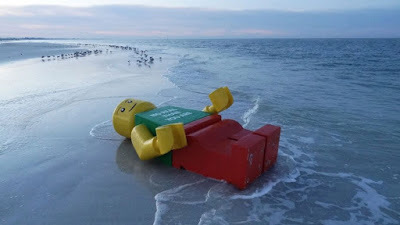
WEIRD THINGS WASHED ASHORE
G'day folks,
It is no longer shocking to see strange things wash ashore since this is one thing the world is becoming too familiar with. After all, more than 70% of our planet is covered in water, so on occasion, some rare and weird things will somehow manage to wash up on shores in different locations. In fact, lots of man-made remnants and even some pleasant-looking rare animals have washed up on shores over the years. While this is seen as a big environmental issue, sometimes mind-boggling things wash up with the shambles.
From little-understood sea creatures that you could call marine mysteries, to huge toys and other weird things. And yes, those unexpected things usually gets everybody to scratch their heads in shock. As long as things keep slipping into the waters around the world, and as long as the planet remains surrounded by water, stranger things are bound to float around out there …Perhaps bigger and stranger things than we can think of.
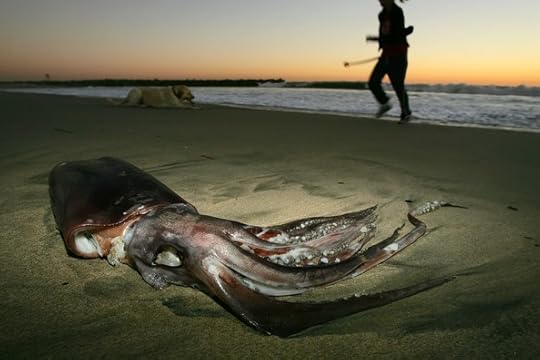
In September 2005, an army of giant squids, weighing as much as 17 pounds, washed up in Newport Beach Calif. The bug-eyed creatures, believed to be Humboldt squid, naturally live in deep waters, so it was hard for locals to come across them both on land and sea. Authorities explained that the squid might have been chasing after bait fish and gotten too close to shore. Other factors, such as warm ocean temperatures or record rainfall were also suspected.
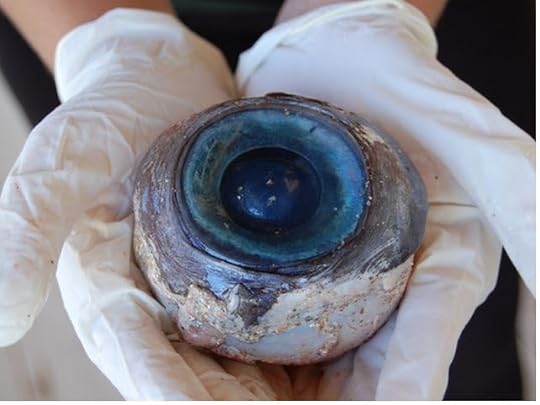
This enormous floating eyeball washed up on the sand in Fort Lauderdale, Florida in 2012. The softball-sized eyeball was found by a man who was out for a stroll. He kicked the undamaged eyeball around a few times before taking it home to preserve it in his refrigerator. Fortunately he didn’t take it home to feed on it but simply to keep it fresh until someone from the Florida Fish and Wildlife Conservation Commission (FWC) could come and identify it. Normally, rumors of massive sea monsters began spreading throughout the area.
Wildlife authorities quickly ruined the fun by identifying the giant oculus as belonging to a huge swordfish (a specie that can reach fourteen hundred pounds). Well, it didn’t end there as many still asked how the eye wound up on the beach? The FWC solved the mystery too by saying that although it was definitely uncommon to see a fully intact eyeball separate from any other body parts, this one had clear, straight-line cuts around the tissue—indicating that some horrific fisherman carefully cut out the baby blue and then threw it overboard.
In 2006, a tractor-trailer-size container filled with thousands of bags of Doritos washed up on a beach in Frisco. When the container was broken open by Charter boats captains, they discovered that it was brimming with Doritos. Surprisingly a horde of the packets were still sealed and undamaged. But the story regrettably doesn’t have an entirely happy ending as the container carrying the Dips was never recovered!!
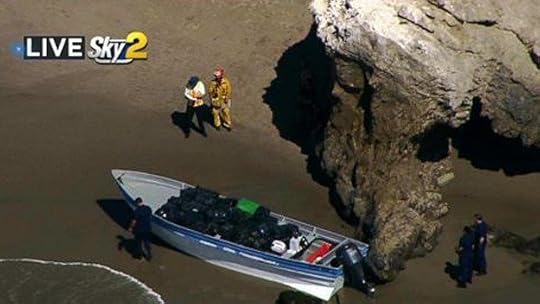
This 30-foot fishing boat carrying more than one ton of marijuana washed up onto the Southern California coast. The boat was seen close to Ventura and the Los Angeles county line near Leo Carillo State Park. Anyway, what’s more shocking is that till date no one has come forward to claim the cargo and although one person was detained on the beach for “sampling” the product, the appearance of the boat and it’s cargo remains a mystery. According to the U.S. Coast Guard, a helicopter crew could not locate anyone in the water. No arrests or injuries have been reported in connection to the vessel as of yet outside the person who was detained on the beach.
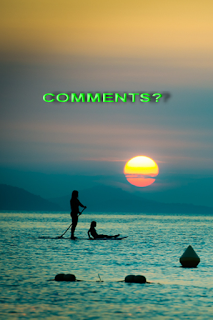
Clancy's comment: Wow, what next? We can only imagine what might float ashore.
I'm ...


Published on June 29, 2017 15:19
June 28, 2017
29 June 2017 - THE GLORY OF MOTHER NATURE
 THE GLORY OF MOTHER NATURE
THE GLORY OF MOTHER NATUREG'day folks,
Welcome to the glory of mother nature.


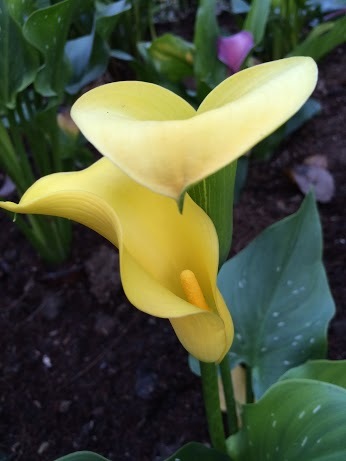



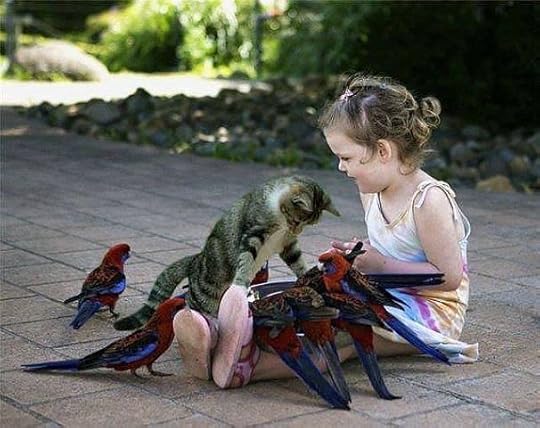




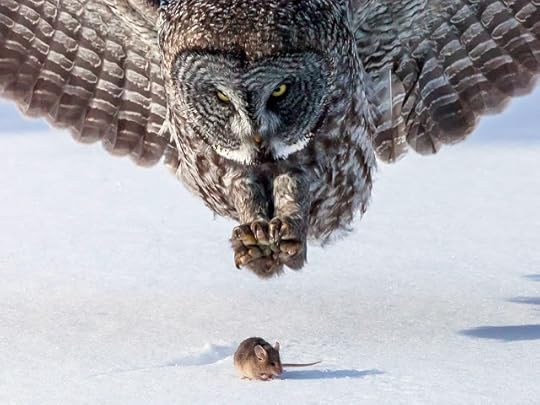





Clancy's comment: Amazing, eh?
I'm ...


Published on June 28, 2017 14:49
June 27, 2017
28 June 2017 - The Ruins of Batman’s Lair in Thailand
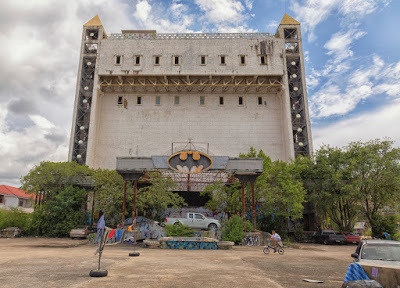
The Ruins of Batman’s Lair in Thailand
G'day folks,
Welcome to another abandoned building. This one is in southern Thailand.
T he Batman nightclub entertainment establishment sits decaying away in the Thai coastal city of Pattaya. Derelict for over 20 years, the crumbling club sits on Soi Batman, the street that still carries its name, as it is still a very distinguishing building.
The Batman was built in the mid-1990’s in central Pattaya, where it became one of the city’s hottest night-spots. The club’s Batman spotlights could be seen beaming across the city each night, as if Pattaya were Gotham City and customers were being called instead of help from a caped-crusader.
It was also a ‘snooker club’ on the members-only upper floors, where the ladies that worked there walked around scantily clad (or un-clad) and entertained club members in short-time rental rooms. This enormous, dilapidated venue, though only in operation for a brief spell, remains standing as a mysterious and foreboding reminder to Pattaya locals of past adventures in local nightlife.
The once-eventful six-floor structure (including the rooftop), now seems to host mainly street artists who come to spray murals on the many walled canvases, as well as a few vagrant folks who use it as a shelter for humid, rainy Pattaya nights. There was a street art event held at the Batman in March of 2016, which provided the colourful array of murals covering most of the internal and external walls.
The ground floor area, which was the main Batman dance floor, is completely submerged under a few meters of water. What is now a murky pond was once a large dance area with a bar and a stage for live performances. It was reported in local news last year that a man’s body of was found floating in that very pool. Now, here are some photographs of this building.


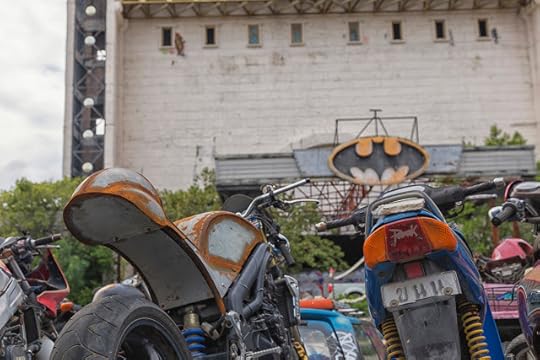

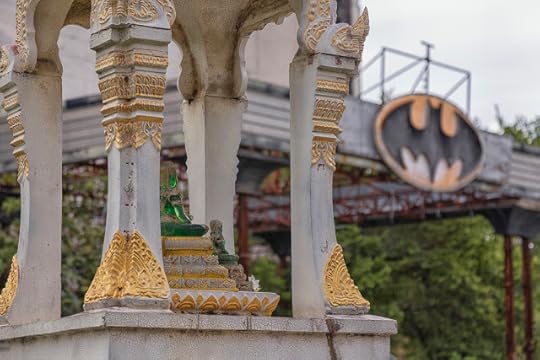





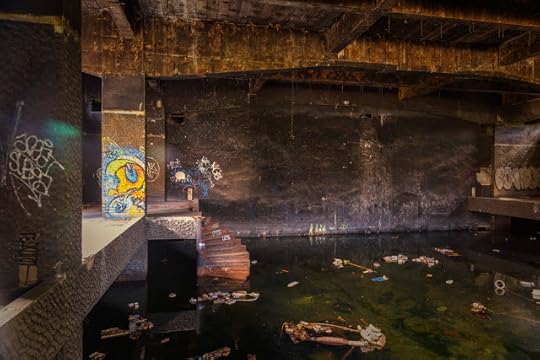

Clancy's comment: A big place, but can't say I've been there. Love the artwork.
I'm ...

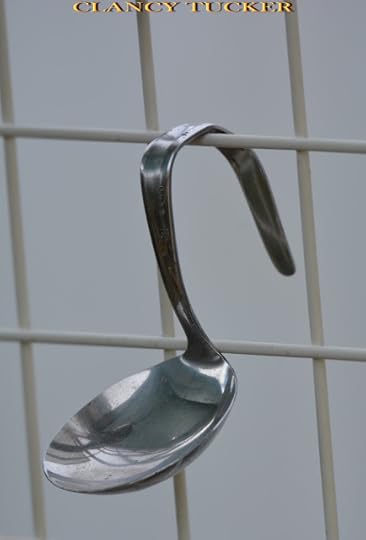
Published on June 27, 2017 04:51
June 26, 2017
27 June 2017 - UNDERWATER MUSEUM IN THE BLACK SEA
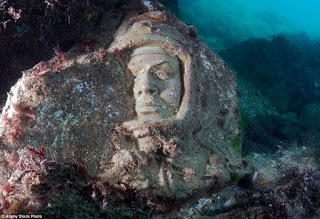
UNDERWATER MUSEUM IN THE BLACK SEA
G'day folks,
This might surprise you. Then again, if you are like me, nothing surprises you today.
Free entry and no queues, this sounds like the ideal museum. However, this unique underwater museum is not an easy place to visit. Located 100m off the shore of Cape Tarkhankut in Crimea, visitors require at least a basic level of diving skills to take a trip.

Known as the “Alley of Leaders”, this original museum was created by Vladimir Borumensky, a qualified diver from Donetsk, in 1992. After the collapse of the Soviet Union, Vladimir Broumensky obtained a statue of Lenin, unsure of what to do with this he placed the statue on Cape Tarkhankut, much to the annoyance of the local residents.

The opposition that he received from the other inhabitants led to him having to relocate the statue and he decided to transfer it to the Black Sea, making this the first exhibit of the museum.
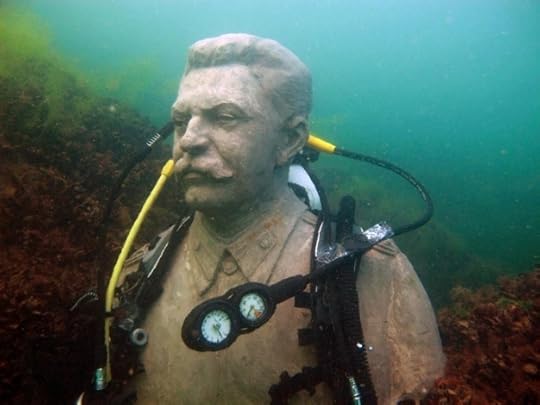
Overtime Vladimir, along with other divers, has collected a number of other statues of ex-Soviet leaders, including Stalin, Marx and Voroshilov, to add to the collection. Currently there are over 50 exhibits in the museum including a replica Eiffel Tower and Tower Bridge.



Clancy's comment: Amazing, eh? I would love one of those statues in my garden. However, the statue below IS one of many in my garden.
I'm ...
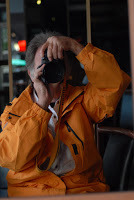

Published on June 26, 2017 14:45
June 25, 2017
26 June 2017 - T. Haven Morse - Guest Author
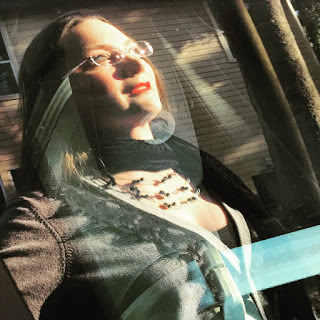
T. Haven Morse
- Guest Author -
G'day folks,
Welcome to my interview with a multi-genre author and poet.
Welcome, T. Haven Morse ...
1. TELL US A LITTLE ABOUT YOURSELF AND YOUR WRITING JOURNEY.
I’m a poet and writer who loves crafting pieces that are character-driven and grab readers by the heart. Since I jumped into this craft a bit later in life—not starting until I was 38—I brought a lot of life experience to the table. I’ve travelled all over the world, lived in foreign countries, met a wide variety of people, and have learned to pick myself up when I fall – with grace and gratitude, most of the time. Makes this writing-thing easier since my ego doesn’t drive the bus as often and I’ve risked way more than failing in writing. Doesn’t make me fearless but makes the rejections and edits more palatable.
2. WHEN AND HOW DID YOU BECOME A WRITER?
I’ve only been at this writing thing for about two years, but I’ve had an incredible journey thus far. I’ve explored fiction, nonfiction, and just about everything in between. I’m not sure if I can tell you the exact moment that I became a writer. I think I’ve always been a writer, I’m just honing my skills and learning the marketable craft of writing now.
3. WHAT TYPE OF PREPARATION DO YOU DO FOR A MANUSCRIPT? DO YOU PLAN EVERYTHING FIRST OR JUST SHOOT FROM THE HIP?
I’m a plotting pantser. I initially come up with the outline for the story or poem - basic plot points, main characters, themes. But then as I get rolling, I allow the characters, rhythm, or mood to play and interject. So, the piece might take twists and turns that I never saw coming in my initial outline. However, it always seems to work out in the end and the two combine into a cohesive piece of storytelling or collection of poetry.
4. WHAT DO YOU ENJOY MOST ABOUT BEING A WRITER?
The flexibility. I can write anywhere, at any time, with or without anyone else being present. Yes, there is some coordinating to be done with beta readers, editors, publishing, reading/signings, etc. But, on a whole, it’s a much more flexible process than I’ve experienced in previous jobs and situations.
5. WHAT IS THE HARDEST THING ABOUT BEING A WRITER?
Picking which project to focus on. I have so many stories and poems and articles and blogs floating around in my head and heart that having to pick which one to focus on and when can be a chore. Sometimes, there’s a battle between projects—each vying to be in the written word spotlight.
6. WHAT WERE YOU IN A PAST LIFE, BEFORE YOU BECAME A WRITER?
A world traveller and an adventurer. I’ve danced across Europe with a touring company, lived in Manhattan – working with Broadway shows, worked with Doctors Without Borders in Guatemala, and transported rescue dogs from state to state.
7. WHAT IS YOUR GREATEST WRITING ACHIEVEMENT?
Honestly, starting my writing career at thirty-eight-years-old without a degree would have to be my greatest writing achievement. Not letting people tell me that I was too old or too late to start a new career or live a new dream. As well, I never finished college. So, I don’t have an MFA in creative writing or a degree in English. I think those are valuable assets for writers to have but I want other writers, like me, to know that you don’t have to have those credentials to be a successful writer.
8. WHAT ARE YOU WORKING ON AT THE MOMENT?
I’m marketing my poetry book that came out back in March, Flooded By, doing rewrites/edits on book one of my fantasy novel series due out later this year, and penning numerous blogs, newsletter articles, interviews, and other tidbits for various publishing and writing-related entities.

9. WHAT INSPIRES YOU?
People’s emotions and how those emotions drive us to act or react to one another and to ourselves.
10. WHAT GENRE DO YOU WRITE?
Poetry and fantasy mostly. However, I write other genres from time to time – memoir, flash fiction, and nonfiction pieces.
11. DO YOU HAVE ANY TIPS FOR NEW WRITERS?
You’re coming into writing in a time when anything is possible. If you want it bad enough, are willing to be patient, understand the basics of marketing (as well as writing), and work well with others, you can do this. Network like a beast and stay open to possibilities that may come your way—those help too.
12. DO YOU SUFFER FROM WRITER’S BLOCK?
Nope. I’ve got more ideas and stories in this crazy-train of a brain than I could publish in a hundred years. From time to time a scene may befuzzle me or I might struggle with a character detail but I just sleep on it and within a day or two, the answer will come to me—usually while driving or in the shower. No need for Pepto or Immodium AD to get things flowing.
13. DO YOU HAVE A PREFERRED WRITING SCHEDULE?
Not really. I enjoy writing first thing in the morning, mostly because I have vivid dreams that inspire shorter stories or scenes. But I can write whenever my schedule allows and the spirit moves me.
14. DO YOU HAVE A FAVOURITE WRITING PLACE?
The balcony, at my home, is an amazing place to write – when it’s not 100 degrees and 90% pure Texas coastal humidity. Enclosed by huge, ancient oaks and pine trees, it’s isolated and I’ve made it my own version of heaven on earth – with flowers, bird feeders, and comfy patio furniture.
15. WHAT IS YOUR GREATEST JOY IN WRITING?
Readers reactions. Tears in eyes, thoughtful lip biting, nodding heads. When they look up from the page or when I finish reading aloud and they are either so lost in the moment that they can’t respond or they say, “I felt like that was written just for me”.
16. WHO IS YOUR FAVOURITE AUTHOR AND WHY?
Tough call. I’m such a diverse reader. Hard to choose between Suzanne Collins on one hand, Robert Fulghum on the other, Elizabeth Gilbert on one foot, Margaret Atwood on the other foot, and Paulo Coelho on my lap. All of these people write stories (fiction or non) that connect with me. I feel like I know them or their characters after reading their work. The moment is real to me and I’ve had an experience after spending time with them or their characters.
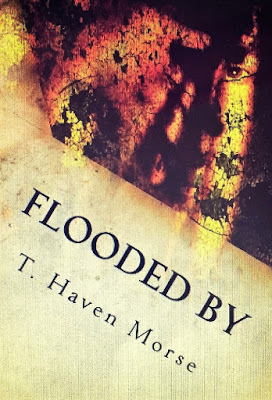
17. WHAT’S THE GREATEST COMPLIMENT YOU EVER RECEIVED FROM A READER?
In one of the five-star reviews for Flooded By, a sweet reader wrote, “This is the most powerful poetry I have ever read. The authenticity of emotions is awesome.” There, that’s it for me. Achieving authenticity and reaching a reader’s emotions. Nothing better for me to hear than that.
18. WHAT WAS THE WORST COMMENT FROM A READER?
Good question. I had a beta reader once said, “I just don’t get her. She doesn’t feel real to me.” I don’t think this was a bad comment at all, it gave me the information I needed to rework the character and the scene. But I did have a moment of crushed writer spirit that took some deep breaths and dark chocolate to get over.
19. WRITERS ARE SOMETIMES INFLUENCED BY THINGS THAT HAPPEN IN THEIR OWN LIVES. ARE YOU?
Absolutely! I dedicated Flooded By to Hans Zimmer, whose film scores I listened to while writing the collection, and to everyone I’ve ever met, observed, or heard about. Experience is the fuel that feeds my writing and gives it that foundation of authenticity.
20. OTHER THAN WRITING, WHAT ELSE DO YOU LOVE?
Connecting, helping, and have I mentioned dark chocolate yet? I have a tattoo on my forearm that reads “Iunctus” – Latin for connected or adjoined. And I was born with a servant’s heart, I’m happiest when helping make the world a better place. Yep, sounded corny as soon as I wrote it. Oh, well. It’s true. Corny or not.
21. DID YOU HAVE YOUR BOOK / BOOKS PROFESSIONALLY EDITED BEFORE PUBLICATION?
Yes and no. I had my poetry collection read by beta readers – some of whom are professional editors by trade. They made suggestions on word choice here and there, and questioned a few themes but didn’t really edit per say. Not a formal developmental or copyedit. Then I did have two fellow poets give the entire book a once over for proofreading.
22. DESCRIBE YOUR PERFECT DAY.
Oh, this is like the favorite author question. (Pardon my American spelling.) There are so many possibilities. A day floating in a bay, in the shadow of a volcano, in Hawaii would be stellar. But, so would a day hiking in the woods, just me and my dogs, the birds and the bees. An afternoon touring art museums with friends could make me just as happy. As would getting to train with the cast of Cirque du Soleil then write a story about it??! So many perfect possibilities.
23. IF YOU WERE STUCK ON A DESERT ISLAND WITH ONE PERSON, WHO WOULD IT BE? WHY?
Can I pass on this question? I’m afraid any answer I give with either be atrociously corny or make someone feel bad because I didn’t choose them. I plead the Fifth.
24. WHAT WOULD YOU SAY IF YOU HAD THE CHANCE TO SPEAK TO WORLD LEADERS?
I would collect all of the quotes, passages, lines, and quips from the people I’ve met, observed, or heard about over my lifetime. Then read them aloud with as much love, heartfelt authenticity, and genuine passion as I could. When I was done, I’d say, “This is why I’m alive. This is the world I want to live in.” Then I give them all dark chocolate – as it solves everything.
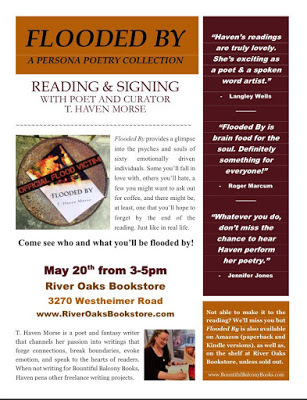
25. WHAT ARE YOUR PLANS FOR THE FUTURE?
Where to begin? Is the moon out of the question? Write more, read more, love more, learn more, see more, feel more, grow more, be more. Yep, that’s about it.
26. WHAT ARE YOUR VIEWS ON BOOK TRAILERS? DO THEY SELL BOOKS?
Not sure. Jury’s still out on trailers. I’m not ready to invest my time and money in producing one just yet. But ask me next week and I may have already started on one.
27. DO YOU SEE YOURSELF IN ANY OF YOUR CHARACTERS?
All of them. Because they’re all emotional creatures, who feel and think, act and react. I’ve yet to pen a character that is devoid of emotions, feelings, thoughts, actions, and reactions. Maybe that’s a new writing challenge for me.
28. DOES THE PUBLISHING INDUSTRY FRUSTRATE YOU?
Well, I haven’t yet dealt with the traditional publishing world. When I pitched my poetry book to a handful of decent-sized, well-known presses, I was told “We’d love to publish it, in two years”, “Sure, we’ll publish your book for an 80% cut and no advance”, and “While we love your idea, we want to completely change everything about your collection”. So, I went with a small, start-up, boutique press and enjoyed the process. No frustrations, as of yet.
29. DID YOU EVER THINK OF QUITTING?
Well, since I just started writing two years ago, I’m not sure I’ve earned the right to quit yet. I’m not much of a quitter anyway. I adapt, adjust, and finagle but don’t often outright quit anything.
30. WHAT WAS YOUR FAVOURITE MANUSCRIPT TO WRITE? WHY?
The one I’m currently working on, of course. Can’t live in the past or the future. So, the manuscript of now is my favorite.
31. HOW WOULD YOU DEFINE ‘SUCCESS’ AS A WRITER.
For me, I label myself a success, if I do something within the scope and field of writing every day. Growth is important to me, so learning something about the craft of writing regularly also facilitates success in my book (ha, ha, accidental pun). Everyone’s goals for being a writer are different, so I say you’re a successful writer, if you’re meeting your writing goals. Yep, very vague and PC of me but that’s how I feel.
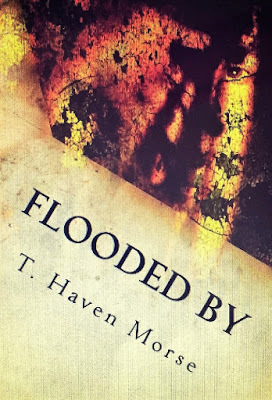
32. WHAT SHOULD READERS WALK AWAY FROM YOUR BOOKS KNOWING? HOW SHOULD THEY FEEL?
Knowing – a bit more about themselves and/or life. Feeling – connected, like they’ve just stepped back off the pages as the cover closes.
33. WOULD YOU LIKE TO HAVE YOUR BOOKS MADE INTO MOVIES? EVER WRITTEN A SCREENPLAY?
Sure, I’d love to see my words and concepts shared in as many mediums as possible. What I write, I write to be shared and experienced. If I can reach movie-goers, music-lovers, theatre-patrons, and readers, that’s the holy grail of connection to me. I haven’t written a screenplay, as of yet, but some of my early beta readers on the fantasy novel I’m working on mentioned that it felt like a screen or stage play. They could see actors performing it in their heads. So, who knows.
34. HOW MUCH THOUGHT GOES INTO DESIGNING A BOOK COVER?
For me, almost as much as the writing itself. The cover is your chance to catch the reader’s attention visually. It’s the interview process to determine if you get the job. Because I love collaborating with others, I found an artist whose work speaks to me and asked to use one of his pieces for the cover of Flooded By. I love the idea that my readers might discover his art because of my book and vice versa.
35. WHAT’S YOUR ULTIMATE DREAM?
Wow, I am seriously a corny human being. Oh well. My ultimate dream is to love and connect with everybody. Yep, it’s a lofty one. Probably not achievable by a human being but it’s my ultimate dream. I hope that writing is helping me get there by connecting with readers.
36. WRITING IS ONE THING. WHAT ABOUT MARKETING YOU, YOUR BOOKS AND YOUR BRAND? ANY THOUGHTS?
Writing is only a smidge of the job of a writer these days. You also have to be an accountant, marketing guru, promoter, salesperson, public speaker, tech wiz, self-editor, and office manager. This is particularly true for those of us that work with smaller presses or self-publish. Unless you have a stellar agent, publisher, cover designer/artist, editor, formatter, and promotional director, you’re going to end up doing some of these tasks along the way. So, my best suggestion is to learn as much as you can and fake-it-till-you-make-it with all the rest. Or marry a sugar-daddy/mama and get them to hire you a staff.
37. ARE YOUR BOOKS SELF-PUBLISHED?
My only solo-authored, published book was published by a boutique publishing house called Bountiful Balcony Books. So, technically, no. However, being a smaller press, I’ve done a lot of the work myself and I’m good with the collaboration.
38. DESCRIBE YOURSELF IN FIVE WORDS.
Collaborative, Open-minded, Open-hearted, Optimistic, Emotionally-driven
39. WHAT PISSES YOU OFF MOST?
People reacting out of ignorance or fear. (I’ve been pissed at myself plenty over the past forty years?!?)
40. WHAT IS THE TITLE OF THE LAST BOOK YOU READ? GOOD ONE?
It was a tie. I like to read two books at once. One in bed before going to sleep and one in the morning to kick off the day. For dawn, I’ve been reading The Handmaid’s Tale by Margaret Atwood and at dusk, The Spy by Paulo Coelho. Yep, both are stellar. Connection and authenticity through and through. Plus, amazing female protagonists.
41. WHAT WOULD BE THE VERY LAST SENTENCE YOU’D WRITE?
Before I die? “My peace I leave you.”
Before the end of this interview? I don’t know I’ll tell you in two more questions.
42. WHAT WOULD MAKE YOU HAPPIER THAN YOU ARE NOW? CARE TO SHARE?
If everyone in the world were able to glimpse, for just a moment, into the hearts and minds of everyone else. To get to walk a poem in another’s shoes. Feel that we’re all made of the same stuff – blood and molecules, energy and stardust, magic and mystery, hopes and fears. Could you take care of that for me, Clancy?
43. ANYTHING YOU’D LIKE TO ADD?
Thank you. I love doing and reading interviews like this one. They make me feel like part of a huge community of writers and readers, all coming together to get to know one another through the written word. Pretty powerful and, in my corny, little heart, amazing. Oh, and I guess this is the traditional place to plug myself and my work. Check out BountifulBalconyBooks.com for more about me, my persona poetry collection, Flooded By, blog posts, and for where to stay tuned for the release date of book one of my fantasy novel series, “Feathers of the Phoenix” – due out later this year. Thanks, Clancy!

BOUNTIFUL BALCONY BOOKS
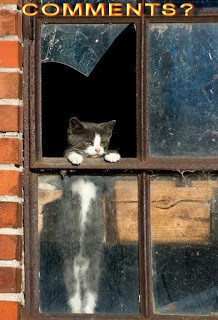 Clancy's comment: I enjoyed this interview. It was easy and relaxed. Many thanks, and keep writing, T. Haven Morse.
Clancy's comment: I enjoyed this interview. It was easy and relaxed. Many thanks, and keep writing, T. Haven Morse.I'm ...


Published on June 25, 2017 15:07
June 24, 2017
25 June 2017 - THE NAZI 'SUPER BABY' BREEDING PROGRAM
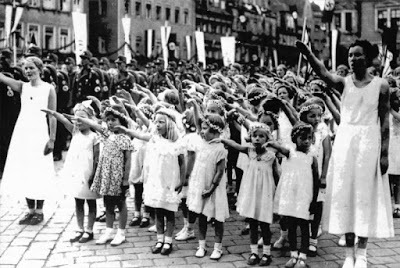
THE NAZI 'SUPER BABY' BREEDING PROGRAM
G'day folks,
Today's post is quite sobering.
I f there was one subject that could ever truly capture my attention at school, it was the monster story that was Adolf Hitler’s Nazi regime. I’ve devoured books on the war, especially those dealing with the Holocaust. Sadly, there seems to be no end to its disturbing secrets buried beneath history’s hidden rocks.
Today, I fell into another dark pool of World War II’s repressed footnotes by discovering the details of the Lebensbornbreeding program … a story that I would only recommend for those who, like myself, have that insuppressible desire to learn history’s most uncomfortable truths.

Lebensborn, meaning “fount of life” was an SS-initiated program that encouraged anonymous births by unmarried “racially pure” women who were selected to breed with Nazi officers and secure the future of a “super race” for the German Reich. The program expanded into several Nazi occupied countries including Norway, France and Belgium, resulting in a shameful post-war ostracism of surviving Lebensborn mothers and the mistreatment of their displaced children across Europe after Germany lost the war.
An estimated 8,000 children were born in Lebensborn institutions in Germany, up to 12,000 children in Norway and countless others across occupied countries where “super babies” had been selected become part of the German master race. The most famous of the surviving Lebensborn children is Frida Lyngstad of the iconic Swedish pop band, ABBA.
With their blue eyes and blond hair, Norweigans were regarded by the Nazi regime as especially Aryan. Heinrich Himmler, the head of the SS and the creator of the Lebensborn, favoured Norwegian women for his perverted program and set up the majority of its institutions in Nazi occupied Norway.

To counteract falling birth rates in Germany, and to promote Nazi eugenics, leaders of the League of German Girls were also instructed to recruit young women with the potential to become good breeding partners for SS officers.
Young women who could prove their Aryan ancestry were given incentives for bearing Aryan children, including financial support and privileged treatment in maternity homes. For many Norwegian women, it became a survival strategy during the war, when their country was one of the poorest places in Europe. At a time when abortion was illegal, they could also have the option of leaving or donating their children in the Lebensborn’s special homes, where the child would receive special nutrition and an upbringing and education which reflected the Nazi way of thinking. The Iron Cross award was given to the women who bore the most aryan children.
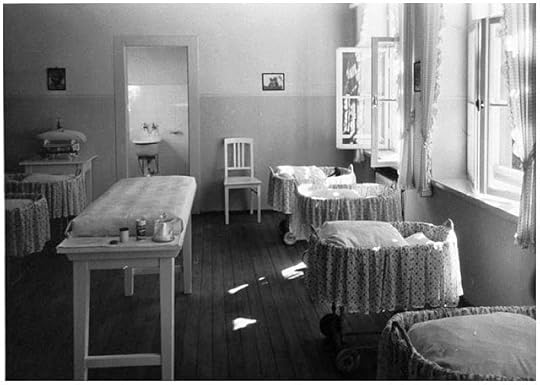
Due to destruction and widespread cover-up of Lebensborn records, it cannot be confirmed whether young girls were forcedto mate with Nazi officers, despite strong suggestion that they were (sexual assault was almost official policy within the Third Reich). The program was undoubtedly however, a system of supervised selective breeding, and recently discovered records show that “some SS men did sire children in Himmler’s Lebensborn program”.
Just to remind us, I took the liberty of pulling up the definition of ‘sire’ : the male parent of an animal, especially a stallion or bull kept for breeding.
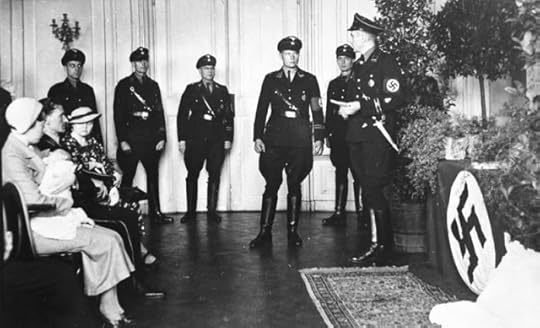
In 1939, membership of the Lebensborn stood at 8,000, of which 3,500 were SS leaders.
Relationships between German soldiers and Nordic women in occupied countries were strongly encouraged, provided both parents were proven to be “racially valuable”. The program also accepted women of Aryan descent who were already pregnant or had already given birth and were in need of aid. About 60% of the mothers were unmarried and the Lebensborn allowed them to give birth secretly away from home without social stigma. In most of these cases, the mothers agreed to adoption, but not all were informed that their children would be sent abroad to Germany.
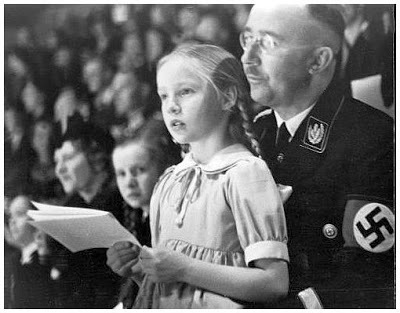
The first of more than 20 Lebensborn homes opened in 1936, in a tiny village near Munich in 1941, the first institution abroad was opened in Norway.
In northern France, a home was opened in the town of Lamorlaye in 1944 where an estimated 200 children were born. The building (pictured above) now houses a branch of the Red Cross. The Lebensborn facilities included an on-site orphanage and offered adoption services. They were often established in confiscated houses and former nursing homes owned by Jews.
While the program initially excluded children born to foreign women and common (non-SS) soldiers for reasons of racial purity, the Lebensborn later expanded into countries with Germanic populations where parents and children were usually examined by SS doctors before admission. But in an even darker twist to the Lebensborn program, the strict requirements of racial purity were practically abandoned altogether by Heinrich Himmler when he took his mission to unimaginable extremes…

In 1939, under Himmler’s direction, Nazis began kidnapping thousands of children regarded as “Aryan-looking” from foreign countries, most notably Poland and Yugoslavia, but also from Russia, Ukraine, Czechoslovakia, Romania, Estonia, Latvia, and Norway – for the Lebensborn program.
Himmler reportedly said, “It is our duty to take [the children] with us to remove them from their environment… either we win over any good blood that we can use for ourselves and give it a place in our people or we destroy this blood”.
The policy of the Lebensraum had essentially given birth to the Nazi ideology of German expansionism and the regime’s plan for the genocide and ethnic cleansing on a vast scale. This was the real crime of Lebensborn, a seemingly helpful, almost innocent welfare solution for struggling women. How easily evil can disguise itself…
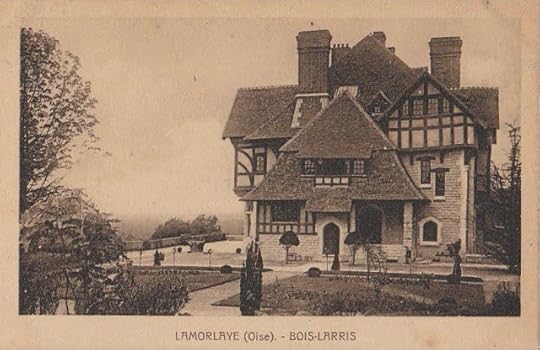
An estimated 200,000 children were stolen from their parents in Poland, Russia and several Eastern European regions for the purpose of ‘Germanization’. They were categorised into groups from the “most desirable” to the least Aryan-looking. If they couldn’t be of use to help build Hitler’s master race, they were discarded and sent off to concentration camps. If a child was considered “acceptable” they would begin indoctrination, spending time at ‘re-education camps’ before being fostered out to German families or boarding schools where they could become culturally German. They were given new German names and forced to forget their birth parents and ancestry. Any children who fought against their indoctrination or resisted, met a tragic fate.
All records of these mass kidnappings were destroyed in the final stages of the war, which made it near impossible to locate and identify children or even know exactly how many were taken. The Polish government has claimed that less than 15% of 10,000 children were returned to their biological parents.
Of the Norwegian children that were born into or indoctrinated under the Lebensborn program, the Norwegian government was able to recover all but 80 after the war. Local communities who had lived in starvation for most of the occupation, sought revenge on both the mothers and children of the Nazi maternity homes where members had received the best treatment available.
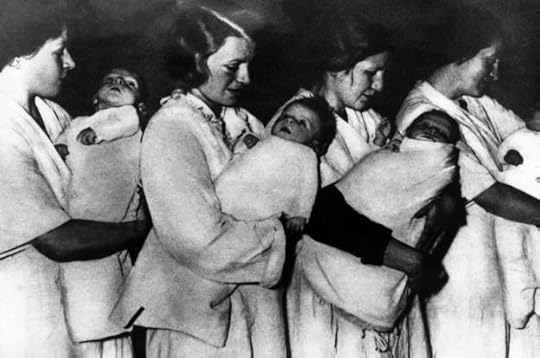
The press reported on the unusually well-fed “super babies” that had received two baths a day. Lebensborn mothers were publicly beaten, shamed, ostracized and often sentenced to slave labour. The “superior” children who had effectively become German under the Third Reich’s program, were considered outcasts and placed in orphanages or even in insane asylums where they would be relentlessly bullied and abused. The Norwegian government itself even attempted (unsuccessfully) to deport the Lebensborn children to Germany, Brazil, and Australia.
Sweden took in several hundred unwanted children from Norway, including future ABBA singer Anni-Frid Lyngstad, whose father was a German sergeant. Her widowed Norwegian mother escaped persecution after the war and took Anni-Frid to Sweden, where their personal history could not be traced.
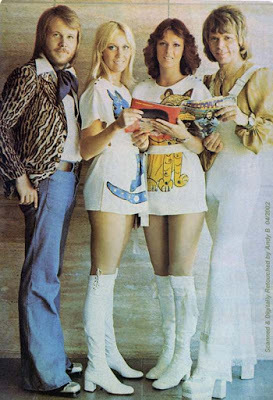
In 2008, a group of survivors brought a case before the European Court of Human Rights to fight the Norwegian government into admitting complicity in their mistreatment, revealing shameful details of the program’s aftermath. The case was dismissed with a compensation offering of £8,000 from the Norwegian government.
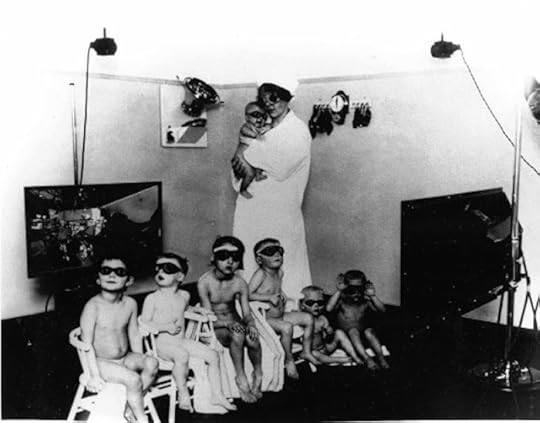
Associations have since been formed to help survivors identify their origins through documents administered by the International Tracing Service and the German Federal Archives.

There are so many facets of war that have been under-reported, swept under the carpet and left out of the history books, in large part due to the fact that we find them uncomfortable to talk about. I consider this sort of taboo historical knowledge as further education; a most fundamental one, that can help us identify dangerous patterns in society and recognise early on when history might be dangerously close to repeating itself.

Clancy's comment: Nothing surprises me today. In fact, I have often said, 'Nothing shocks me at all, but people sure disappoint me.' Not only, I used to have a sign in my office and this is what it said, 'The more I see of some people, the better I like my dog.'
And, since 1945 we have had to suffer the likes of Pol Pot, Idi Amin, Robert Mugabe, and countless other dictators around the world - ALL MEN! Now, today, we have some maniac in Syria, gassing his own people, many of whom are innocent kids.
We have learnt nothing.

I'm ...


Published on June 24, 2017 15:03
June 23, 2017
24 June 2017 - GREAT QUOTES WORTH READING

GREAT QUOTES WORTH READING
G'day folks,
Time for some more quotes to fire you up for the day.
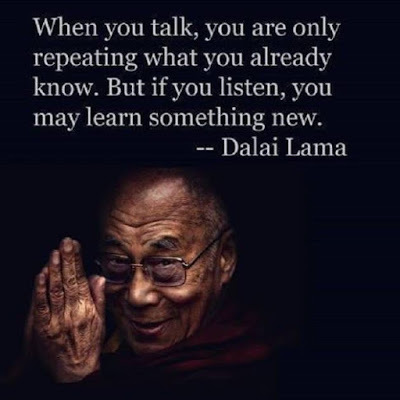
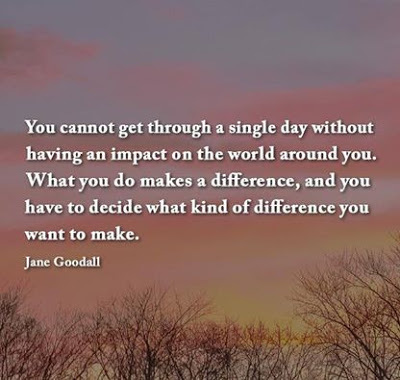

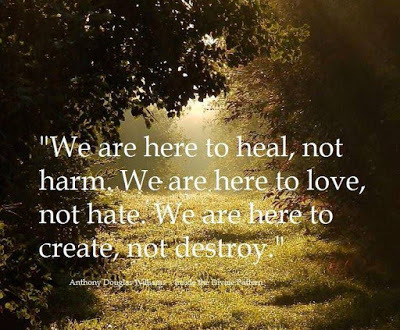
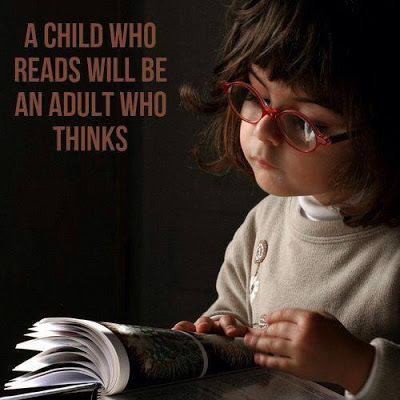
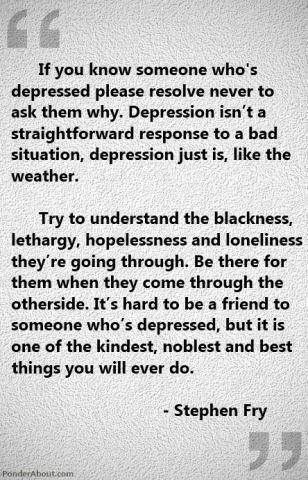
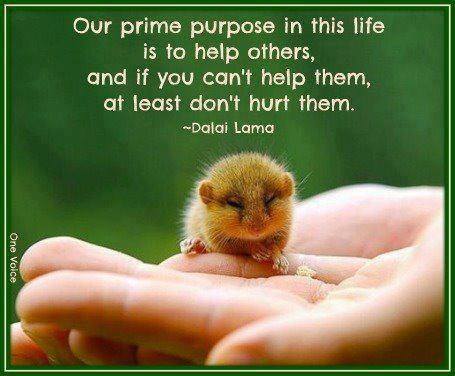

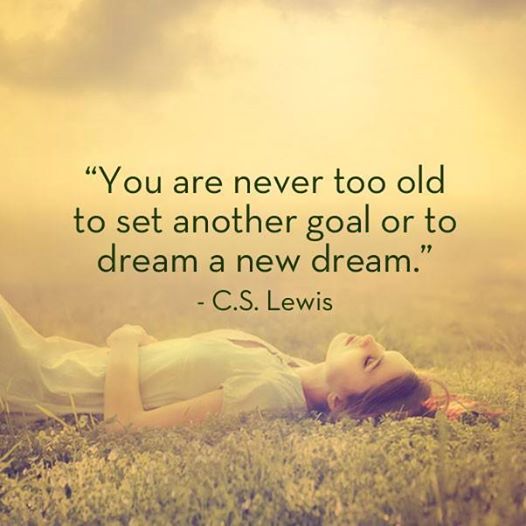



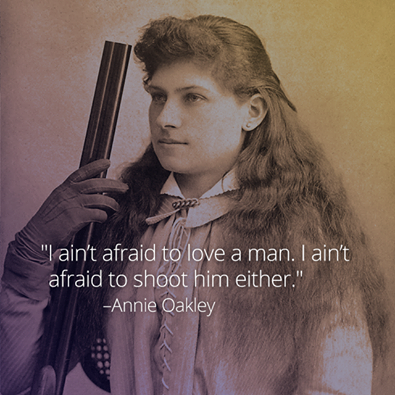

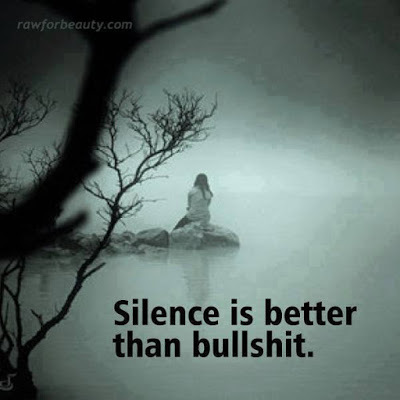

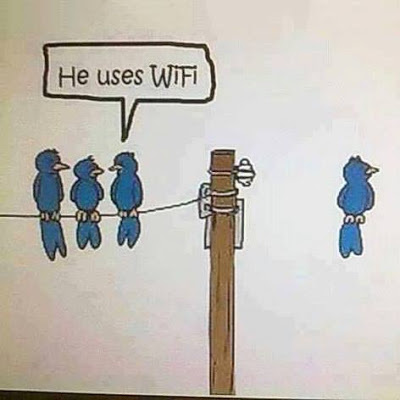
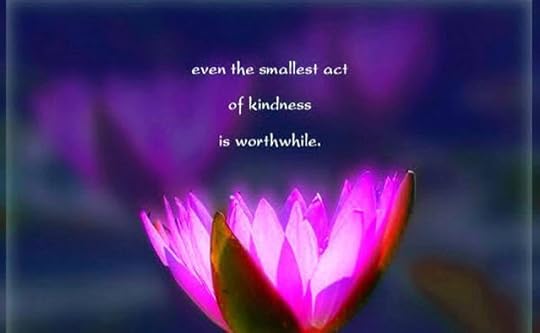

Clancy's comment: Yep, loved a few of these, especially the one about silence.
I'm ...


Published on June 23, 2017 14:54
June 22, 2017
23 June 2017 - TOP BLACK AND WHITE PHOTOGRAPHY
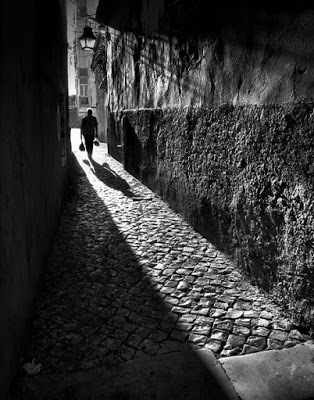
TOP BLACK AND WHITE PHOTOGRAPHY
G'day folks,
I've always admired black and white photography because it is so clear and detailed. Now, check out these great shots from around the world. I'm sure some of them will bring back old memories - good and bad.
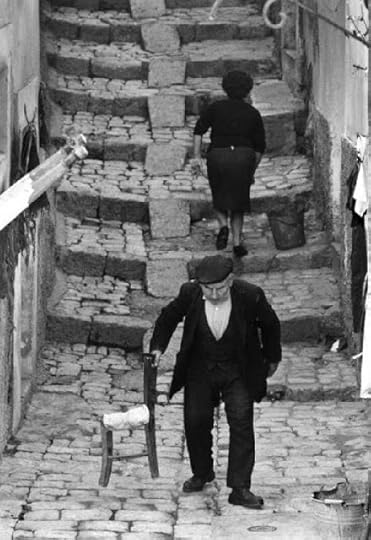


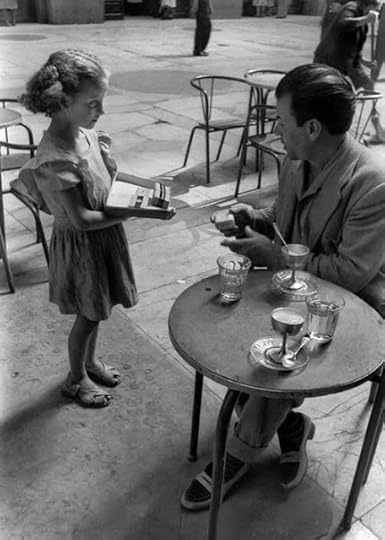
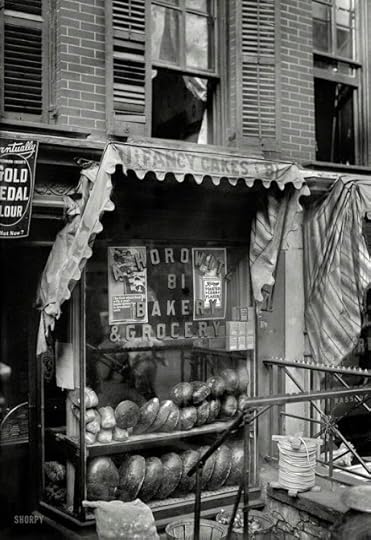
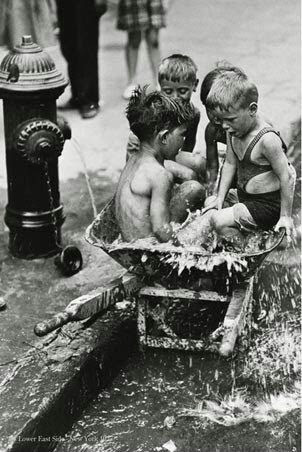

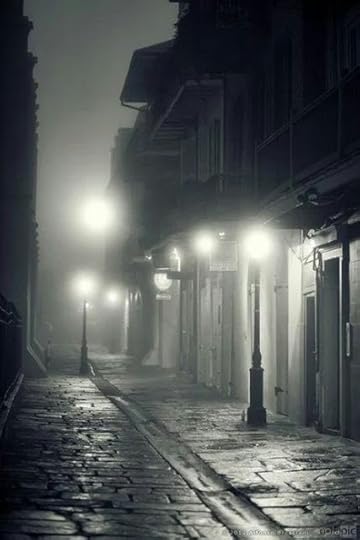

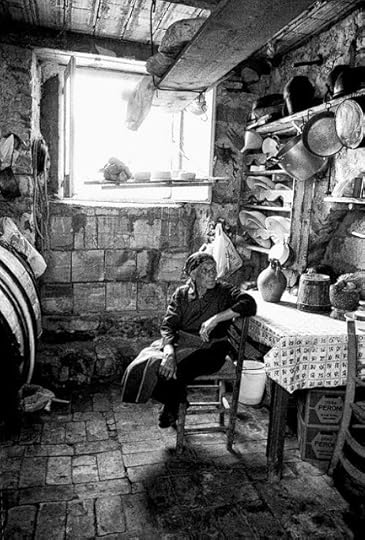
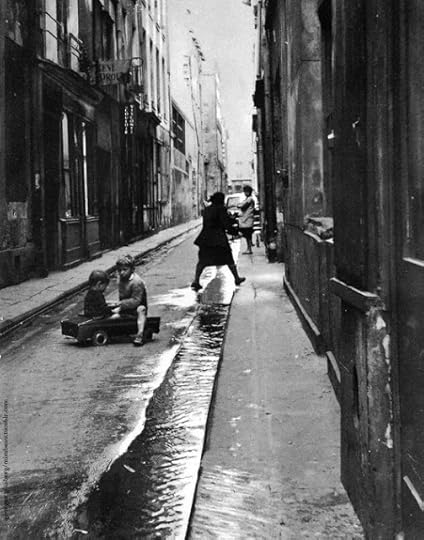
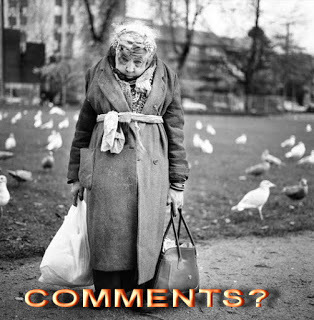
Clancy's comment: Brilliant, eh? I like to see what the fashion was in days gone by.
I'm ...
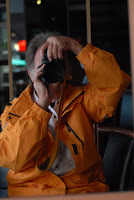

Published on June 22, 2017 04:41
June 21, 2017
22 June 2017 - THE JAGUAR
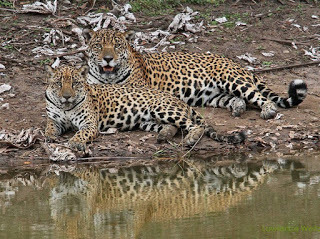
THE JAGUAR
G'day folks,
Welcome to some facts about a beautiful animal. The jaguar is a big cat, a feline in the Panthera genus, and is the only extant Panthera species native to the Americas. The jaguar is the third-largest feline after the tiger and the lion, and the largest in the Americas.
The jaguar is the largest cat in the Americas. It has a compact body, a broad head and powerful jaws. Its coat is normally yellow and tan, but the colour can vary from reddish brown to black. The spots on the coat are more solid and black on the head and neck and become larger rosette-shaped patterns along the side and back of the body.

As a top-level carnivore, the big cat helps prevent overgrazing of vegetation by keeping its prey populations in balance. Jaguars are also important in human culture, frequently playing a central role in stories, songs and prayers of indigenous people. Yet today, jaguars have been almost completely eliminated from the United States.

Diet
Jaguars are known to eat deer, peccary, crocodiles, snakes, monkeys, deer, sloths, tapirs, turtles, eggs, frogs, fish and anything else they can catch.
Population At best, only an estimated 15,000 jaguars remain in the wild. Bi-national conservation efforts have been successful at protecting a small population of 80 to 120 cats in the remote mountains of Sonora, Mexico bordering Arizona. This population is the largest of three known to remain in Sonora, and is the last hope for recovery in the United States.

Range & Habitat
The mighty jaguar once roamed from Argentina in South America all the way up to the Grand Canyon in Arizona. Today, jaguars have been almost completely eliminated from the United States and are endangered throughout their range, which stretches down to Patagonia in South America. The jaguar makes its home in a wide-variety of habitats including deciduous forests, rainforests, swamps, pampas grasslands and mountain scrub areas.

Behavior Jaguars are solitary animals and live and hunt alone, except during mating season. The male's home range is between 19 and 53 square miles and often overlaps with the smaller home ranges of multiple females. A male aggressively protects his home range and resident females from other males.The jaguar hunts mostly on the ground, but it sometimes climbs a tree and pounces on its prey from above. It has very powerful jaws and sharp teeth and usually kills its prey with one crushing bite to the skull. Unlike most big cats, the jaguar loves the water — it often swims, bathes, plays and even hunts for fish in streams and pools. Like all members of the big cat family, jaguars can roar. The jaguar’s roar sounds like a deep, chesty cough.


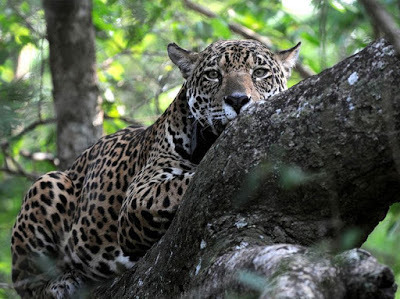
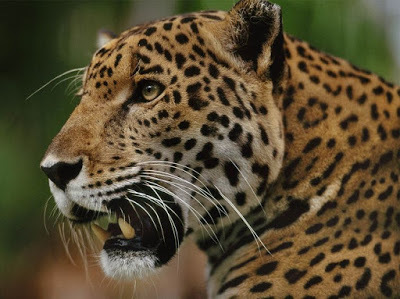
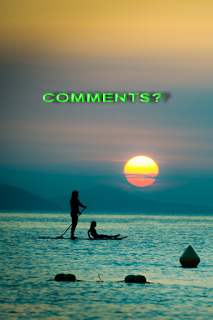
Clancy's comment: Beautiful and sleek animal.
I'm ...


Published on June 21, 2017 05:46



